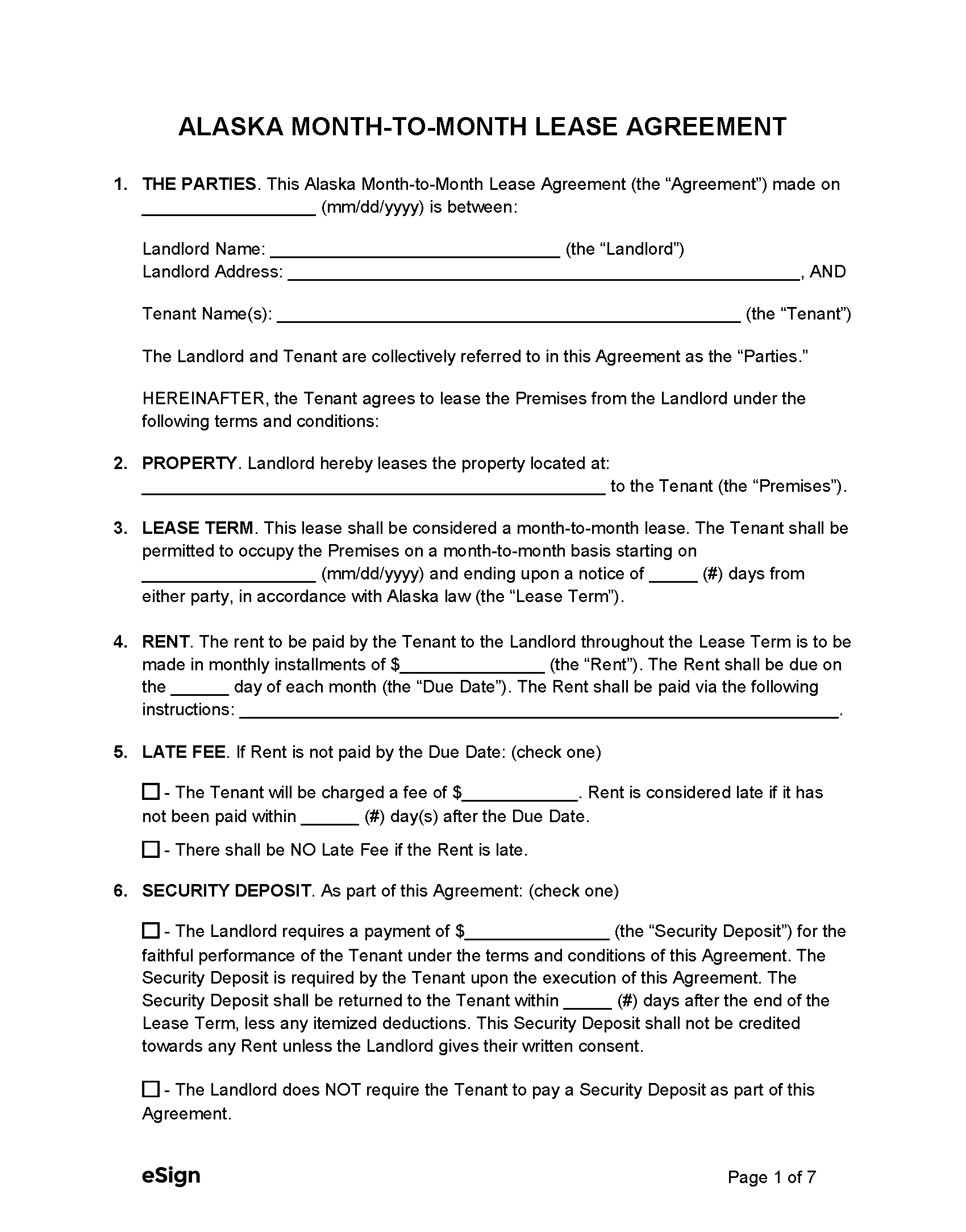Month-to-Month Lease Laws
- Termination Notice – The landlord or tenant may give 30 days written notice to the other party to cancel.[1]
- Rent Increase Notice – Rent increase notice is not mentioned in the Alaska state statutes. To modify a month-to-month lease, the landlord must give 30 days notice as they would if they were canceling the tenancy.
Required Disclosures (4)
- Absence – The rental agreement must state that the tenant must notify the landlord whenever they’ll be away from the property for more than seven days.[2]
- Landlord’s Information – The landlord must disclose to the tenant in writing any persons authorized to manage the property and receive notices/demands from the tenant.[3]
- Lead-Based Paint Disclosure Form (PDF) – Federal law states that landlords and tenants must sign this form for any dwelling constructed before 1978 to show that the tenant has been informed of the possibility of toxic paint.[4]
- Withholding Security Deposit – The terms and conditions by which the landlord may withhold any portion of the security deposit must be provided to the tenant.[5]

